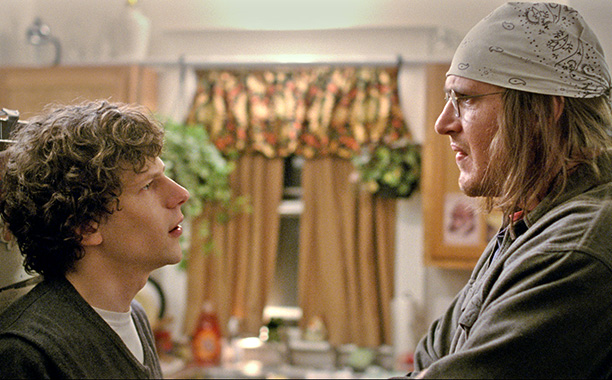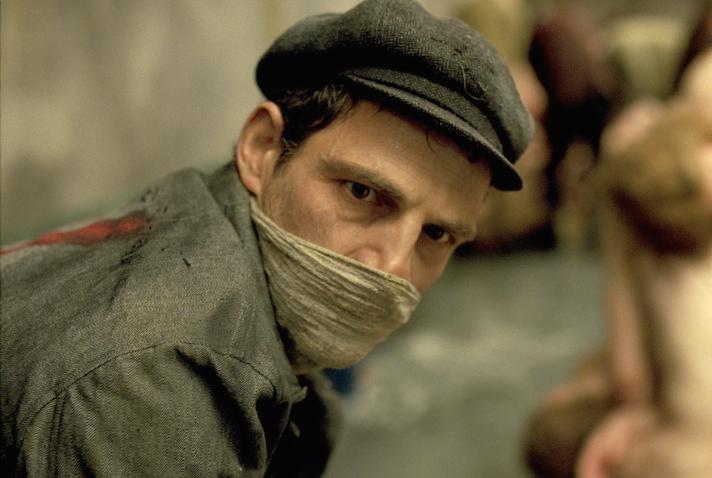By providing your information, you agree to our Terms of Use and our Privacy Policy. We use vendors that may also process your information to help provide our services. This site is protected by reCAPTCHA Enterprise and the Google Privacy Policy and Terms of Service apply.
How to Win at Film Festival Roulette: Stacking Your Odds at the Top Fests
Bryan Glick

Bryan Glick is the director of theatrical distribution for The Film Collaborative. Some of his notable releases include “I Am Divine,” “Manos Sucias” and “1971”. He has also worked for LAFF, AFI Fest and Sundance. Below is his take on the top festivals.
We at The Film Collaborative frequently hear from filmmakers after the fact that they regretted
premiering at festival “A” and wish they had opted for festival “B.” Similarly, when we ask
a filmmaker why they want to premiere at a particular film festival, we rarely get
an answer grounded in research.
READ MORE: Attention, Filmmakers: 9 Tips for Maximizing Your Film’s Success on the Festival Circuit
The truth is that all the top festivals have certain types of films they gravitate towards, and all attract certain kinds of buyers looking for a particular
type of product. With Sundance, Berlin, SXSW, Tribeca and Cannes behind us (and
many filmmakers going into production to meet their Sundance deadline or wrapping
up to apply for TIFF), we thought that now would be the perfect time to step back
and look at the bigger picture of the 2015 festival landscape (including TIFF 2014).
We chose to define this list based on the number of films that screened
at each festival and had not publicly stated they were being distributed before
the festival lineup was announced.
The number of films listed as being acquired is to the best of our
knowledge. This includes many films that have yet to go public with their distribution
deals but that we can confirm from filmmakers, distributors and/or sales agents.
While we focused on a small list of top festivals, please note that
major deals can come from any of a variety of festival. All that said, the following
is the look at the major premiere festivals most filmmakers we meet with are pursuing.
 READ MORE: Attention, Filmmakers: Essential Film Festival Tips
READ MORE: Attention, Filmmakers: Essential Film Festival Tips
2015 Sundance Film Festival
By the numbers:
– 74 Sundance acquisitions (including 19 for over $1 million)
– 74 of 104 films acquired
– 18 of 25 award winners acquired
Buyers: A24, Alchemy, Broad Green Pictures, Film Arcade, Fox Searchlight,
Gravitas, HBO, IFC, Kino Lorber, Lionsgate, Magnolia, Netflix, Showtime, Sony Pictures
Classics and The Orchard.
The lowdown: Sundance is perhaps the Holy Grail as far as buyers are concerned.
Sundance is a popular stomping ground for Netflix and the all rights deals that
are much harder to come by at Cannes or TIFF. The fest is especially effective for
highlighting documentaries and top notch narrative films.
The only catch is that Sundance simply isn’t an international
festival. If you don’t take the all rights deal it can be much more work selling
the film abroad. Since Sundance is the first big festival stop of the year, many distributors jockey for
position. But if your film is not American, this might not be the festival for you. Half of the world doc/world dramatic films have yet to secure North American distribution;
all but four films in the U.S . Dramatic and Documentary section have secured distribution
and almost all were in six or seven figures.
As far as getting into the festival, the festival is notoriously insular.
A strong majority of U.S. Competition films are backed by the Sundance Institute
and/or come from Sundance alumni. Also, Sundance tends to stick to theatrical length films. You will
rarely see 50-70 minute films accepted. They show a particular interest in politically-oriented documentaries.

SXSW 2015
By the numbers:
– 37 SXSW Acquisitions
including 3 for over $1 million
– 37 of 100 films acquired
– 11 of 17 award winners acquired
Buyers: Netflix, Drafthouse Films, Roadside Attractions, Gravitas, FilmBuff,
Alchemy, Vertical Films, Ignite Channel and IFC
The lowdown: SXSW is always a tricky proposition. With 145 films (20+% more than
Sundance or Tribeca) presented over nine days instead of 11-12, there’s simply a lot
going on. This means it is much easier to fall through the cracks. Since the festival doesn’t sell tickets ahead of time, it’s very possible nobody will show up to your screening.
However, the fact that the slate skews younger and is more adventurous
often means that films have large built-in fan bases, and that there are bold discoveries
that distributors can sometimes get at bargain prices. There is a reason FilmBuff and Gravitas nabbed at least eight films combined. Throw in Netflix and you have 11 titles that we
can confirm going a targeted digital route.
This is the one top festival where your film is guaranteed to get
screened by a festival programmer when you submit. They go out of their way to find
filmmakers who are not as connected to the industry. If you don’t have industry contacts, this might be your best bet. The festival primarily
programs American films and is a popular follow up to TIFF and Sundance. They also
shine a light on local Texas talent.

2015 Tribeca Film Festival
By the numbers:
– 22 Tribeca acquisitions including 3 for over $1 Million
– 22 of 79 acquired
– 3 of 15 award winners sold
Buyers: A24, IFC, Saban Films, Paramount and Strand Releasing all took multiple titles
The lowdown: Tribeca screens fewer films than the other top North American fests
and has a reduced schedule during the regular workweek. As the only top festival
in a major U.S. industry hub, things tend to follow a more traditional trajectory.
However, we find films at Tribeca often don’t think about the long
game. With summer being a slow period, many films will simply stop pursuing festivals
while waiting for a deal—a strategy that tends to backfire, as more often than not
they wind up forgotten.
While the narrative quality is growing, the star-driven fare tends to dominate. Some based on their star brand can get
big deals, but at its heart, the fest is really about documentaries. They
have a lot of character profile and political documentaries that fall under the awards bait
category and frequently appeal to a more traditional indie film crowd.
As Sundance continues to narrowly define their documentary programming, Tribeca
is proving to be an industry asset. This is also a great fest to go to as a North
American premiere. Frequently films that fall through the cracks at Berlin, IDFA and Rotterdam get more attention here, and also tend to be
the winners on awards night. Accordingly, if you’re an American filmmaker and awards
are important to you, recent history suggests that you might want to bypass this
fest. Additionally (unlike SXSW), they embrace their local filmmakers far less,
preferring to focus on the international power.

2015 Cannes Film Festival
By the numbers:
– 21 of 81 acquired
-9 of 25 award winners acquired
Buyers: Alchemy, Cohen Media Group, IFC, Kino Lorber, Radius-TWC, Strand Releasing, Film Movement, IFC and Sony Pictures Classics
The lowdown: Cannes is the international behemoth and certainly being in competition
is the best place to launch a film as a foreign language contender. The festival
skews much more international in its programming and deal opportunities. While the
U.S. distribution picture is bleaker, the rest of the world rapidly snatches up
everything they can from the festival.
This is perhaps the most insider-y of the festivals. Only one film
in competition was from a first-time director. Cannes frequently pulls from their
own rank and file. They also show the fewest number of documentaries of any festival on the
list and those are almost solely films about film/filmmakers/actors.
There are similarly few slots for genre fare. Films in the other
sidebars like Directors Fortnight and Un Certain Regard are far less likely to get
North American distribution when the dust settles, but can usually count on a long
festival life.
Cannes, of course, is committed to films from France. However,
the festival has continued to struggle in highlighting female directors.
This festival is easily the worst of the bunch for thinking outside-the-box when it comes to distribution. DIY is basically a dirty word and very few
crowdfunded films get in. Distributors are also less likely to tout how much they
paid for a film in press releases, which is why we do not list the amount of seven-figure deals.
2015 Toronto Film Festival
By the numbers:
– 99 TIFF films acquired (including 16 for over $1 million)
– 99 of 214 acquired
Buyers: A24, Alchemy,
Bleecker, Broad Green, Image Entertainment, Lionsgate, Magnolia, Roadside Attractions,
Paramount, Radius-TWC, Relativity, Saban Films, Sony Pictures Classics, Breaking Glass Pictures, China Lion, Focus World, Cinema Guild, Cohen Media Group, Film Movement, IFC, Lionsgate, Magnolia, Monterey Media, Drafthouse Films, Oscilloscope, Strand Releasing, Music Box Films, Screen Media, Saban Films, Kino Lorber and The Orchard
Now, keep in mind that TIFF was a full nine months ago. So why the relatively low numbers when compared to Sundance or even SXSW?
The truth is that TIFF has too much product and is largely geared
toward star-driven fare. It can be a place to snatch up leftovers from Cannes
and Locarno, but non-star driven English language fare (including several Canadian
films), documentaries and any of the films in the Discovery, Contemporary World
Cinema and Wavelength sections are unlikely to generate much attention.
The nice thing about TIFF is they take films from more countries
than anywhere else. The fest also has never been too concerned with length, with
many films over two and a half hours and others not even reaching 70 minutes.
With such a wide variety of films TIFF is the most eclectic and hardest
to define programming-wise. They take a lot more genre fare than the other fests
and their docs tend to reflect an international worldview. The seven figure deals
almost exclusively come from star-driven fare. If a film is in English and Oscar
bait, but lacks distribution this is the place to be. Keep in mind that documentaries account for less than 15% of the festival’s lineup.
Of course, keep in mind that many more films from these festivals will ultimately secure some form of domestic distribution. It took TFC’s “Gore
Vidal: The United States of Amnesia” nine months after its Tribeca premiere to
secure its IFC deal and it ultimately went on to become the second highest grossing
film from Tribeca 2013.
So be smart in organizing your priorities, do your homework and prepare for
the emotional roller coaster of festivals.
READ MORE: Attention, Filmmakers: Don’t Submit to Festivals Yet
By providing your information, you agree to our Terms of Use and our Privacy Policy. We use vendors that may also process your information to help provide our services. This site is protected by reCAPTCHA Enterprise and the Google Privacy Policy and Terms of Service apply.

















